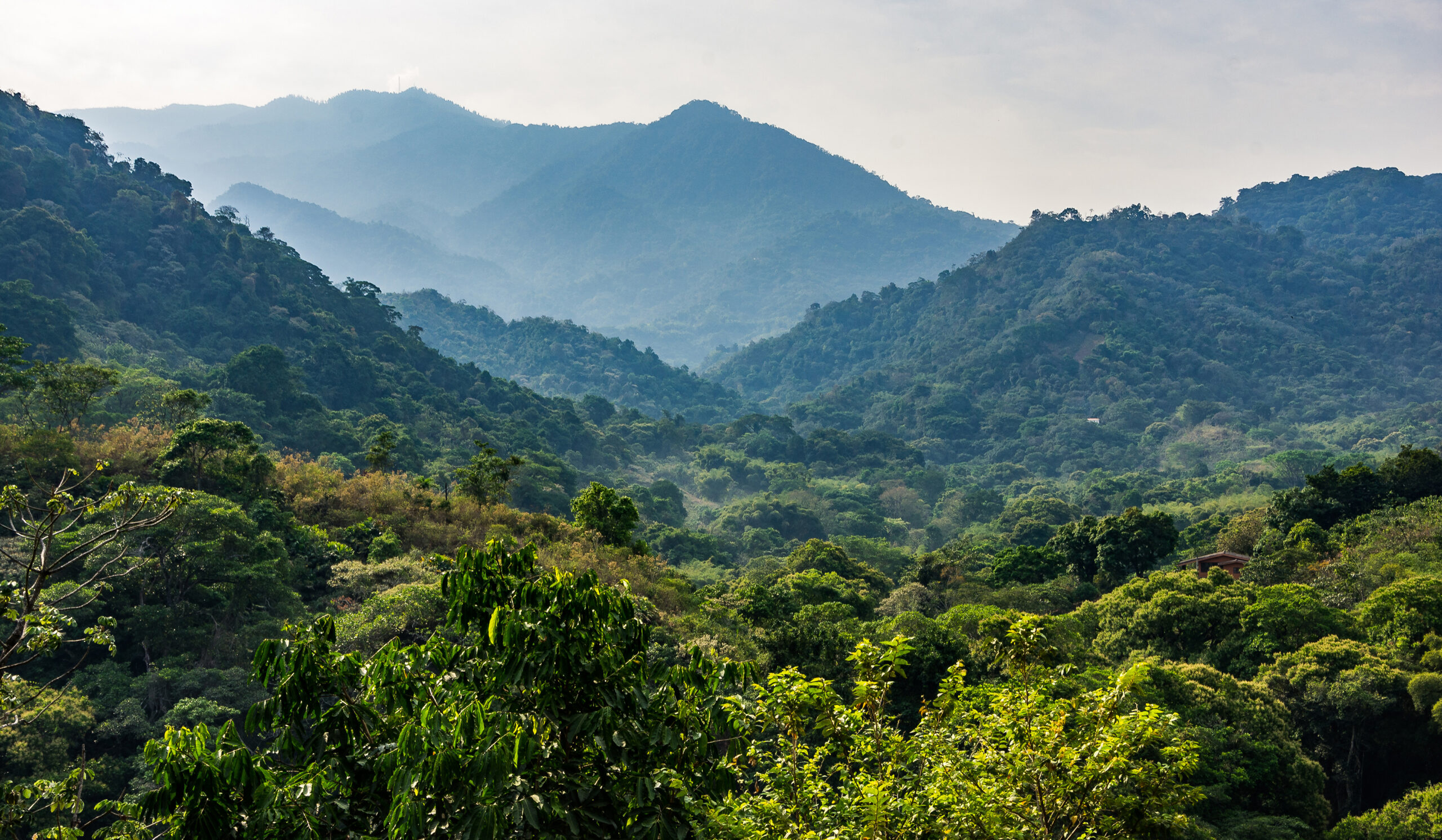In previous articles we emphasized the growing significance of urban green spaces in enhancing city life. The two articles highlight how these areas not only promote ecological balance but also contribute to mental well-being, reduce urban heat, and foster community engagement. The studies provide a compelling foundation for understanding the integral role of green spaces in urban settings and serve as a launchpad for exploring how Colombia’s rainforests, through the concept of “Internet of Forests”, can further enrich urban ecosystems. (See our articles: “The Evolution and Significance of Urban Green Spaces: Enhancing Livability from Ancient Gardens to Modern Sustainable Cities” dated 02/26/2025, and “Green Horizon: The Innovative Living Roof of the California Academy of Sciences” dated 03/10/2025).
In an era where urban growth often comes at the expense of nature, the safeguarding of green spaces has never been more critical. Green ecosystems, such as rainforests, serve as the lungs of our planet, absorbing carbon dioxide, regulating climate, and nurturing biodiversity. Yet their importance transcends rural landscapes; they are intrinsically linked to the health and sustainability of our cities. The green rainforest plays a pivotal role in stabilizing water cycles, providing clean air, and mitigating the effects of urban heat, a natural ally for urban life.
The Internet of Things (IoT) has opened new avenues for monitoring and protecting these fragile ecosystems. By integrating technology into conservation, IoT offers innovative tools to track deforestation, measure environmental changes, and engage communities.
Colombia is widely recognized as one of the most biodiverse countries in the world, often ranked second after Brazil. However, some recent rankings, like the Worldostats 2025 Edition, place Colombia fourth globally, following Brazil, Indonesia, and China. Variations in measuring biodiversity led to these differences, as some rankings focus on species richness, while others consider factors like habitat diversity and conservation efforts. Despite the ranking variations, Colombia’s biodiversity remains extraordinary. Its ecosystems range from the Andes mountains to Amazonian rainforests, hosting thousands of endemic species.
This remarkable status stems from its unique geographical location and diverse ecosystems. Hosting nearly 10% of the planet’s biodiversity, Colombia is home to an astonishing variety of species, including the highest number of bird and orchid species globally, and ranks second in plants, amphibians, butterflies, and freshwater fish.
Additionally, Colombia’s biodiversity is enriched by endemic species, with 14% of its species found nowhere else on Earth. This makes it a vital hotspot for conservation and a treasure trove of ecological richness.
The case of Chiribiquete Ecosystem
The Chiribiquete National Park, located in the Colombian Amazon, is the largest national park in Colombia and the largest tropical rainforest national park in the world.
The Colombian Amazon is a vast and biodiverse region, covering approximately 403,000 square kilometers, which accounts for about 35% of Colombia’s total land area. It forms part of a larger Amazon rainforest, which is often referred to as the “lungs of the Earth” due to its critical role in producing oxygen and regulating the global climate. In the region, deforestation has been a significant challenge, driven by factors including land grabbing and agriculture, such as converting forested areas into pastures for cattle ranching and land speculation, as well as illegal activities like mining, logging, and cultivating illicit crops, which have even threatened protected areas, including national parks like Chiribiquete.
This park boasts a diverse range of ecosystems, featuring tropical moist forests, savannas, and rivers. This region is renowned for its distinctive tepuis, which rise abruptly from the rainforest, forming breathtaking landscapes that showcase the Caño Paujil waterfall as it plunges through the dense greenery. As a biodiversity hotspot, the park is home to thousands of species, with many facing threats. The Colombian Amazon is home to several notable species, including lowland tapirs, giant otters, giant anteaters, woolly monkeys, jaguars, and the Chiribiquete emerald hummingbird, which is the region’s only endemic bird species.
In addition to its natural wonders, Chiribiquete holds immense cultural significance. The park contains one of the oldest and largest archaeological pictographic complexes in the Americas, with over 70,000 ancient paintings depicting animals, hunting scenes, battles, and dancing rituals.

Rainforest in Colombia (Photo: Adobe Stock)
A Network of Trees and Tech. What does the Internet of Forests mean for our Planet?
The concept of the Internet of Forests (IoF) involves applying Internet of Things technologies to manage and conserve forests more effectively. Real-time monitoring of forests can be achieved by integrating sensors and communication systems that track environmental conditions such as temperature, humidity, soil moisture, and wildlife movements.
By harnessing IoT technologies, the Internet of Forests facilitates enhanced data collection and analysis, ultimately leading to more informed decision-making in forest preservation and sustainable management. This system combines land-based sensors, cameras, light detection and ranging (LiDAR), and satellite data with AI-driven analytics to monitor deforestation, illegal logging, and forest fires, and optimizes forest operations and improves worker safety.
IoF not only promotes biodiversity conservation but also boosts internet connectivity for local communities, thereby supporting sustainable industries like precision agriculture, ecotourism, and renewable energy.
How is the Internet of Forests reshaping Conservation and Sustainability?
By leveraging IoT technologies, the Internet of Forests is transforming the way we manage and conserve our forests. Real-time monitoring of critical environmental factors like temperature, wind speed, humidity, and carbon dioxide levels is made possible by embedding internet-connected modules into trees, leading to more efficient and sustainable ecosystem protection.
Here are some key applications:
-
- IoF enables real-time tracking of environmental conditions, such as temperature, humidity, soil moisture, and air quality, which helps assess the health of forests and detect early signs of degradation.
-
- IoT sensors can predict and detect forest fires by monitoring temperature changes and smoke levels, allowing for timely intervention and mitigation.
-
- IoF systems can identify unauthorized logging activities by tracking movements and sounds within forest areas.
-
- IoT devices can track the movement and behavior of wildlife, aiding in biodiversity conservation and habitat protection.
-
- IoF can measure carbon levels in forests, which supports efforts to combat climate change and promote sustainable practices.
The Internet of Forests in action: what the First Results Reveal?
The IoF has played a crucial role in monitoring biodiversity, gauging tree health, and quantifying carbon storage. This system supports conservation efforts in the region by providing early warnings on environmental threats. Despite efforts, deforestation persists as a major challenge in the Colombian Amazon, primarily caused by the expansion of agriculture, livestock, and illegal mining activities. The Amazonian forest suffered a devastating loss of around 2 million hectares in 2022, primarily due to agriculture, livestock expansion, and illegal mining, with Colombia being responsible for almost half of this destruction. According to environmental experts, the current rate of deforestation poses a significant threat to global ecosystems, risking irreversible disruption.
The Internet of Forests represents an innovative fusion of technology and environmental conservation, marking a groundbreaking advancement in ecosystem protection. Globally, forest preservation is reinforced through key tools such as real-time monitoring systems, advanced AI-driven analysis, and optimized connectivity.
However, challenges persist. Illegal logging and land-use conflicts highlight the urgent need for continuous innovation and strict enforcement of conservation policies. Nevertheless, initiatives like the implementation of IoF in Chiribiquete National Natural Park in Colombia demonstrate how digital technologies can play a crucial role in environmental protection, offering cutting-edge solutions to safeguard the planet’s most valuable ecosystems.
Resources
Main Details
https://worldostats.com/biodiversity-rank-by-country-updated-list-2025/#google_vignette
https://lacgeo.com/serrania-chiribiquete-national-park
ONE AMAZON Launches the World’s First Internet of Forests (IoF™), Pioneering Tech to Protect the Amazon Rainforest | Colombia Culture Press



